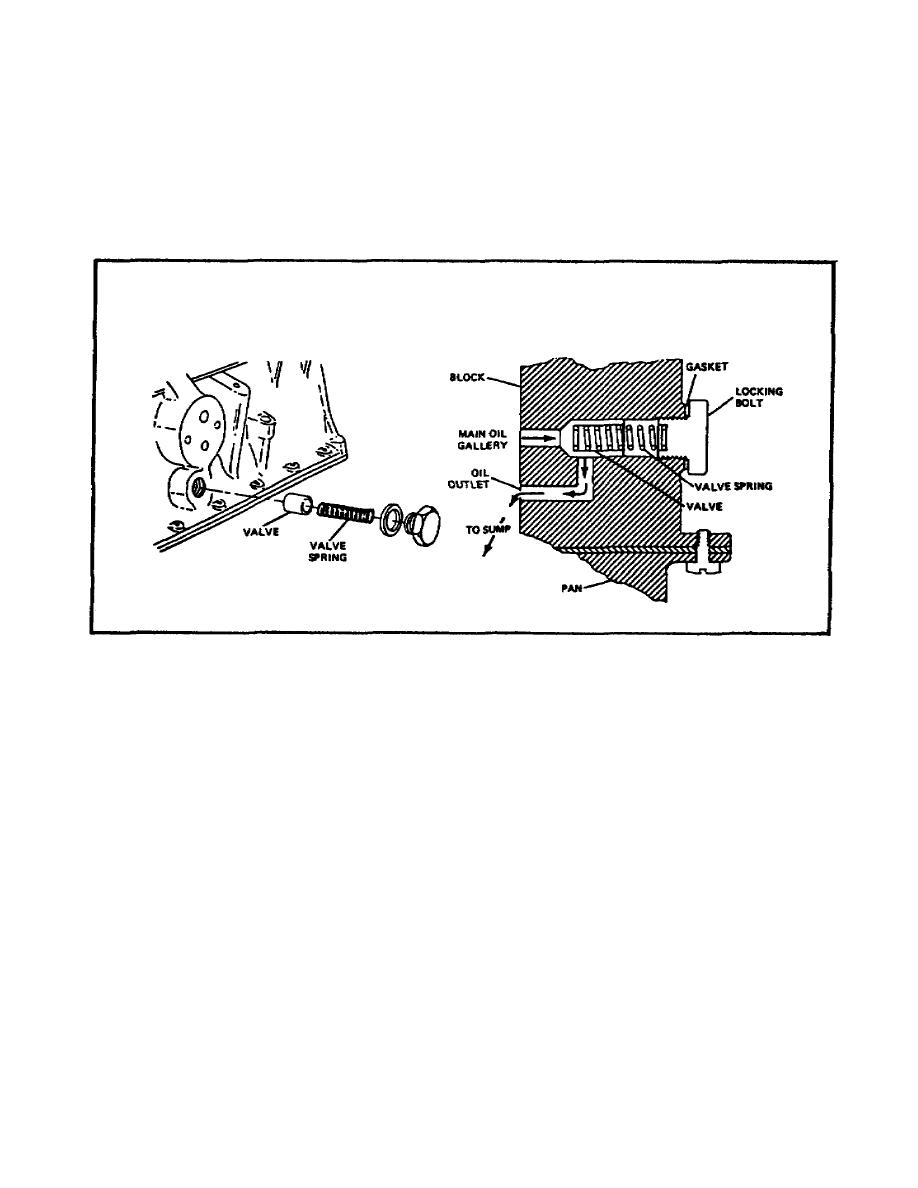
PRIN. OF INTERNAL COMBUSTION ENGINES - OD1619 LESSON 2/TASK 2
h. Pressure Regulator (figure 59). The oil pump will produce pressures in great
excess to those necessary. This excess pressure, if uncontrolled, would cause
excess oil consumption due to flooded cylinder walls and leakage through oil seals.
A springloaded regulator valve is installed in the lubrication system to control
pump pressure. The valve will open as the pressure reaches the value that is
determined by the spring, causing excess oil to be diverted back to the crankcase.
FIGURE 59. OIL PRESSURE REGULATOR.
5. Types of Lubrication Systems
a. Splash System (figure 60 on the following page). The splash lubrication system
is no longer used in automotive engines, though it is used in small equipment
engines. In a splash lubrication system, dippers on the connecting rods enter the
oil in the crankcase with each crankshaft revolution, thus splashing the oil. As
the oil is thrown upward, it finds its way into the various engine parts. A
passage is drilled from the dipper to the bearing in each connecting rod to ensure
lubrication. This system is too uncertain for modern automotive applications. One
reason is that the level of oil in the crankcase will greatly vary the amount of
lubrication received by the engine; a high level results in excess lubrication and
oil consumption and even a slightly low level results in inadequate lubrication.
74





 Previous Page
Previous Page
